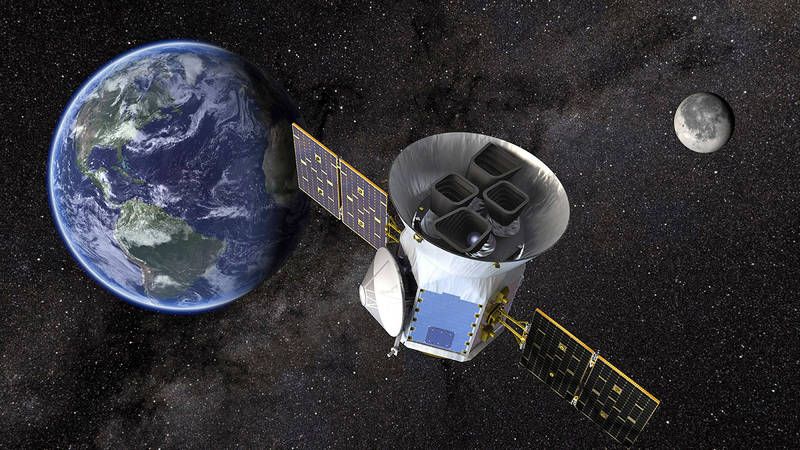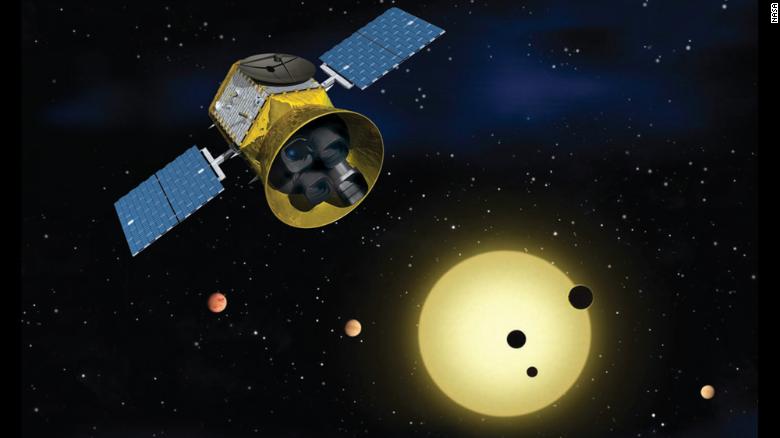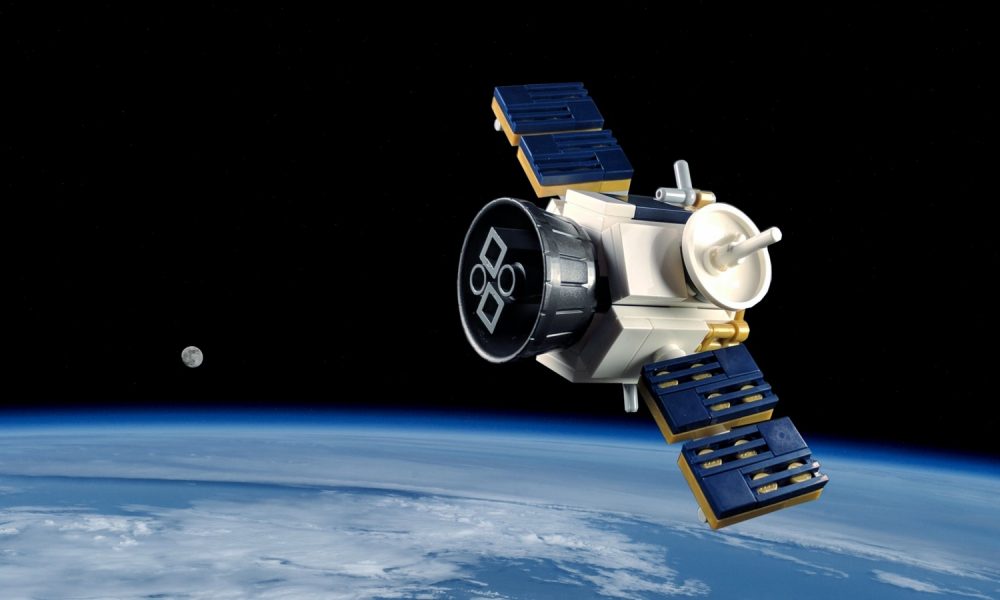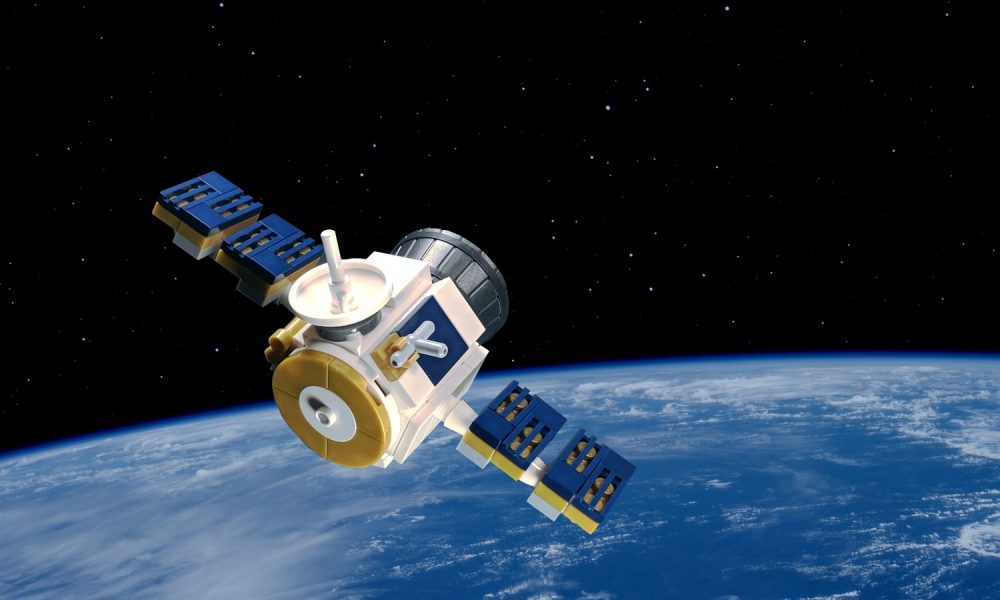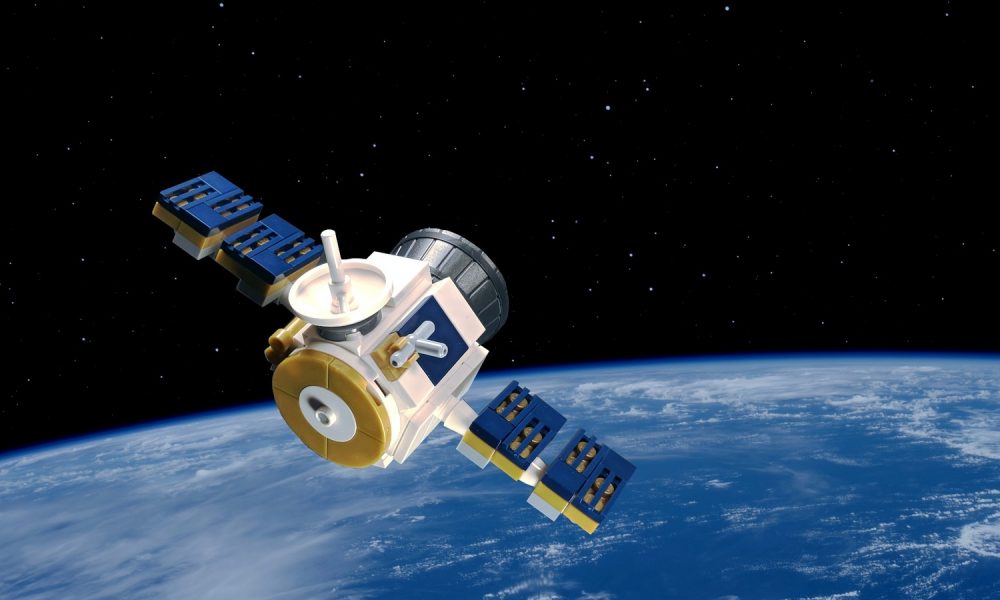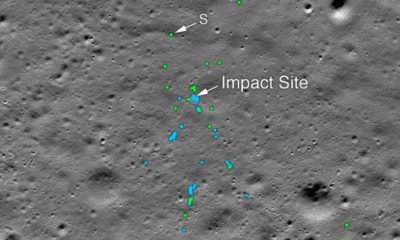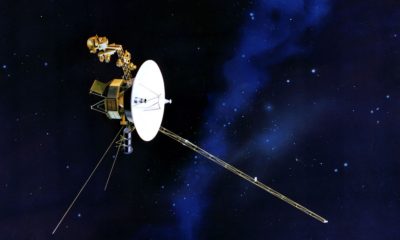Feature
New NASA satellite will hunt for Aliens’ life with exoplanet
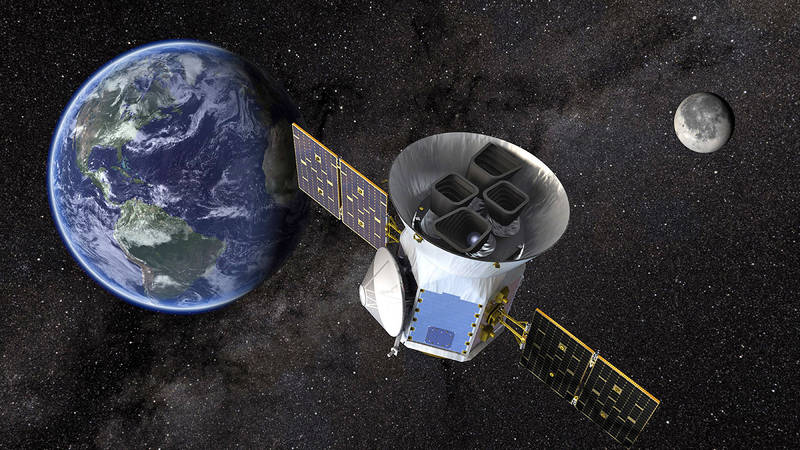
Washington: A new NASA satellite, which will hunt for exoplanets that have the potential to harbour alien life, is on schedule to launch next week.

The Transiting Exoplanet Survey Satellite (TESS), will launch from Space Launch Complex 40 at Cape Canaveral Air Force Station in Florida on April 16, at 6:32 pm (EDT).
“We expect TESS will discover a number of planets whose atmospheric compositions, which hold potential clues to the presence of life, could be precisely measured by future observers,” said George Ricker, TESS principal investigator.

With the help of a gravitational assist from the Moon, the spacecraft will settle into a 13.7-day orbit around Earth. Sixty days after launch, and following tests of its instruments, the satellite will begin its initial two-year mission.
The satellite, developed by scientists at Massachusetts Institute of Technology (MIT) in the US, aims to discover thousands of nearby exoplanets, including at least 50 Earth-sized ones.

The spacecraft, not much larger than a refrigerator, carries four cameras that will survey the nearest, brightest stars in the sky for signs of passing planets.
TESS will spend two years spanning nearly the entire sky – a field of view that can encompass more than 20 million stars.
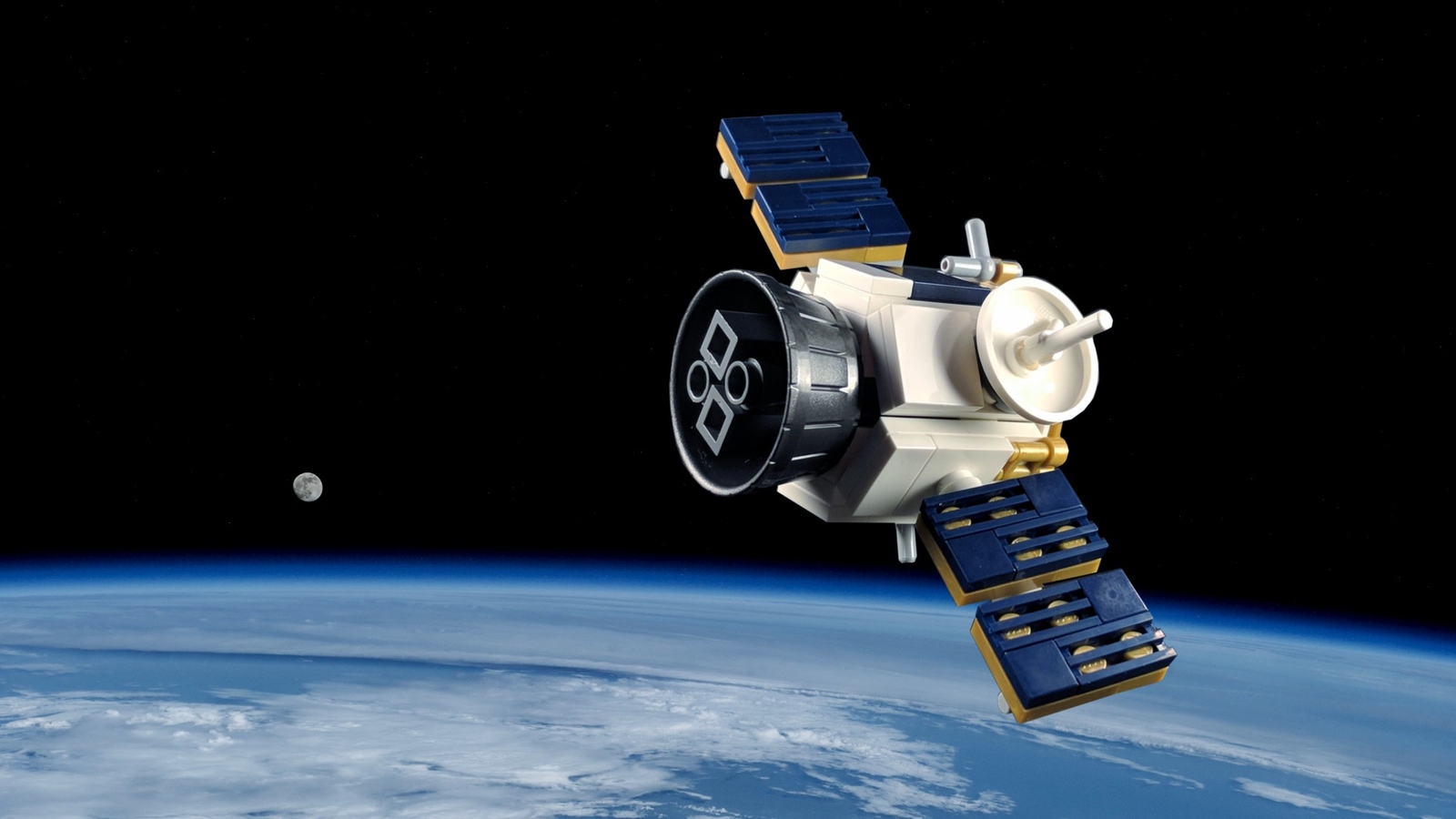
The first year of observations will map the 13 sectors encompassing the southern sky, and the second year will map the 13 sectors of the northern sky.
The spacecraft will be looking for a phenomenon known as a transit, where a planet passes in front of its star, causing a periodic and regular dip in the star’s brightness.
New planet-hunting of NASA satellite will search for Alien’s life:
NASA’s Kepler spacecraft used the same method to spot more than 2,600 confirmed exoplanets, most of them orbiting faint stars 300 to 3,000 light-years away.

“We learned from Kepler that there are more planets than stars in our sky, and now TESS will open our eyes to the variety of planets around some of the closest stars,” said Paul Hertz, Astrophysics Division director at NASA Headquarters.
The TESS science team at MIT aims to measure the masses of at least 50 small planets whose radii are less than four times that of Earth.

Many of TESS’s planets should be close enough to our own that, once they are identified by TESS, scientists can zoom in on them using other telescopes, to detect atmospheres, characterize atmospheric conditions, and even look for signs of habitability.
“TESS is kind of like a scout,” said Natalia Guerrero, deputy manager of TESS Objects of Interest, an MIT-led effort that will catalogue objects captured in TESS data that may be potential exoplanets.

“We’re on this scenic tour of the whole sky, and in some ways, we have no idea what we will see. It’s like we’re making a treasure map,” Guerrero said.
After TESS launches, the team expects that the satellite will reestablish contact within the first week, during which it will turn on all its instruments and cameras.

Then, there will be a 60-day commissioning phase, as engineers at NASA and MIT calibrate the instruments and monitor the satellite’s trajectory and performance.
After that, TESS will begin to collect and downlink images of the sky. Scientists at MIT and NASA will take the raw data and convert it into light curves that indicate the changing brightness of a star over time.
Entertainment
Meghalaya Reserves Legalized Gambling and Sports Betting for Tourists

The State Scores Extra High on Gaming-Friendly Industry Index
Meghalaya scored 92.85 out of 100 possible points in a Gaming Industry Index and proved to be India’s most gaming-friendly state following its recent profound legislation changes over the field allowing land-based and online gaming, including games of chance, under a licensing regime.
The index by the UK India Business Council (UKIBC) uses a scale of 0 to 100 to measure the level of legalisation on gambling and betting achieved by a state based on the scores over a set of seven different games – lottery, horse racing, betting on sports, poker, rummy, casino and fantasy sports
Starting from February last year, Meghalaya became the third state in India’s northeast to legalise gambling and betting after Sikkim and Nagaland. After consultations with the UKIBC, the state proceeded with the adoption of the Meghalaya Regulation of Gaming Act, 2021 and the nullification of the Meghalaya Prevention of Gambling Act, 1970. Subsequently in December, the Meghalaya Regulation of Gaming Rules, 2021 were notified and came into force.
All for the Tourists
The move to legalise and license various forms of offline and online betting and gambling in Meghalaya is aimed at boosting tourism and creating jobs, and altogether raising taxation revenues for the northeastern state. At the same time, the opportunities to bet and gamble legally will be reserved only for tourists and visitors.
“We came out with a Gaming Act and subsequently framed the Regulation of Gaming Rules, 2021. The government will accordingly issue licenses to operate games of skill and chance, both online and offline,” said James P. K. Sangma, Meghalaya State Law and Taxation Minister speaking in the capital city of Shillong. “But the legalized gambling and gaming will only be for tourists and not residents of Meghalaya,” he continued.
To be allowed to play, tourists and people visiting the state for work or business purposes will have to prove their non-resident status by presenting appropriate documents, in a process similar to a bank KYC (Know Your Customer) procedure.
Meghalaya Reaches Out to a Vast Market
With 140 millions of people in India estimated to bet regularly on sports, and a total of 370 million desi bettors around prominent sporting events, as per data from one of the latest reports by Esse N Videri, Meghalaya is set to reach out and take a piece of a vast market.
Estimates on the financial value of India’s sports betting market, combined across all types of offline channels and online sports and cricket predictions and betting platforms, speak about amounts between $130 and $150 billion (roughly between ₹9.7 and ₹11.5 lakh crore).
Andhra Pradesh, Telangana and Delhi are shown to deliver the highest number of bettors and Meghalaya can count on substantial tourists flow from their betting circles. The sports betting communities of Karnataka, Maharashtra, Uttar Pradesh and Haryana are also not to be underestimated.
Among the sports, cricket is most popular, registering 68 percent of the total bet count analyzed by Esse N Videri. Football takes second position with 11 percent of the bets, followed by betting on FIFA at 7 percent and on eCricket at 5 percent. The last position in the Top 5 of popular sports for betting in India is taken by tennis with 3 percent of the bet count.
Local Citizens will Still have Their Teer Betting
Meghalaya residents will still be permitted to participate in teer betting over arrow-shooting results. Teer is a traditional method of gambling, somewhat similar to a lottery draw, and held under the rules of the Meghalaya Regulation of the Game of Arrow Shooting and the Sale of Teer Tickets Act, 2018.
Teer includes bettors wagering on the number of arrows that reach the target which is placed about 50 meters away from a team of 20 archers positioned in a semicircle.
The archers shoot volleys of arrows at the target for ten minutes, and players place their bets choosing a number between 0 and 99 trying to guess the last two digits of the number of arrows that successfully pierce the target.
If, for example, the number of hits is 256, anyone who has bet on 56 wins an amount eight times bigger than their wager.





